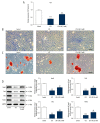Salvianolic Acid C Attenuates LPS-Induced Inflammation and Apoptosis in Human Periodontal Ligament Stem Cells via Toll-Like Receptors 4 (TLR4)/Nuclear Factor kappa B (NF-κB) Pathway
- PMID: 31831723
- PMCID: PMC6929551
- DOI: 10.12659/MSM.918940
Salvianolic Acid C Attenuates LPS-Induced Inflammation and Apoptosis in Human Periodontal Ligament Stem Cells via Toll-Like Receptors 4 (TLR4)/Nuclear Factor kappa B (NF-κB) Pathway
Abstract
BACKGROUND Periodontitis is a chronic inflammatory disease that causes gingival detachment and disintegration of alveolar bone. Salvianolic acid C (SAC) is a polyphenol compound with anti-inflammatory and antioxidant activities that is isolated from Danshen, a traditional Chinese medicine made from the roots of Salvia miltiorrhiza Bunge. The aim of this study was to investigate the mechanisms of underlying its protective effects and its inhibition effect on inflammation and apoptosis in human periodontal ligament stem cells (hPDLSCs). MATERIAL AND METHODS LPS-induced hPDLSCs, as a model mimicking an inflammatory process of periodontitis in vivo, were established to investigate the therapeutic effect of SAC in periodontitis. The inflammatory cytokines secretion and oxidative stress status were measured by use of specific commercial test kits. The hPDLSCs viability was analyzed by Cell Counting Kit-8 assay. The cell apoptosis and cell cycle were assayed with flow cytometry. Expressions levels of proteins involved in apoptosis, osteogenic differentiation, and TLR4/NF-kappaB pathway were evaluated by Western blotting. Alkaline phosphatase (ALP) activity was detected by ALP assay kit and ALP staining. The mineralized nodules formation of hPDLSCs was checked by Alizarin Red S staining. RESULTS Our results showed that LPS induced increased levels of inflammatory cytokines and oxidative stress and mediated the phosphorylation and nuclear translocation of NF‑kappaB p65 in hPDLSCs. SAC reversed the abnormal secretion of inflammatory cytokines and inhibited the TLR4/NF‑kappaB activation induced by LPS. SAC also upregulated cell viability, ALP activity, and the ability of osteogenic differentiation. The anti-inflammation and TLR4/NF‑kappaB inhibition effects of SAC were reversed by TLR4 overexpression. CONCLUSIONS Taken together, our results revealed that SAC effectively attenuates LPS-induced inflammation and apoptosis via the TLR4/NF-kappaB pathway and that SAC is effective in treating periodontitis.
Conflict of interest statement
None.
Figures





Similar articles
-
GNAI3 mediated by Lin28A regulates lipopolysaccharide-induced inflammation and osteogenic differentiation in periodontal stem cells by mediating the NF-κB/NLRP3 inflammasome pathway.Arch Oral Biol. 2024 Jul;163:105974. doi: 10.1016/j.archoralbio.2024.105974. Epub 2024 Apr 12. Arch Oral Biol. 2024. PMID: 38636252
-
Silencing FOXA1 suppresses inflammation caused by LPS and promotes osteogenic differentiation of periodontal ligament stem cells through the TLR4/MyD88/NF-κB pathway.Biomol Biomed. 2025 Apr 3;25(5):1138-1149. doi: 10.17305/bb.2024.11367. Biomol Biomed. 2025. PMID: 39760528 Free PMC article.
-
Lipopolysaccharide differentially affects the osteogenic differentiation of periodontal ligament stem cells and bone marrow mesenchymal stem cells through Toll-like receptor 4 mediated nuclear factor κB pathway.Stem Cell Res Ther. 2014 May 27;5(3):67. doi: 10.1186/scrt456. Stem Cell Res Ther. 2014. PMID: 24887697 Free PMC article.
-
LPS Preconditioning Attenuates Apoptosis Mechanism by Inhibiting NF-κB and Caspase-3 Activity: TLR4 Pre-activation in the Signaling Pathway of LPS-Induced Neuroprotection.Mol Neurobiol. 2021 May;58(5):2407-2422. doi: 10.1007/s12035-020-02227-3. Epub 2021 Jan 9. Mol Neurobiol. 2021. PMID: 33421016 Review.
-
Pharmacological Effects of Polyphenol Phytochemicals on the Intestinal Inflammation via Targeting TLR4/NF-κB Signaling Pathway.Int J Mol Sci. 2022 Jun 22;23(13):6939. doi: 10.3390/ijms23136939. Int J Mol Sci. 2022. PMID: 35805952 Free PMC article. Review.
Cited by
-
Low-intensity pulsed ultrasound enhances immunomodulation and facilitates osteogenesis of human periodontal ligament stem cells by inhibiting the NF-κB pathway.Cell Tissue Bank. 2023 Mar;24(1):45-58. doi: 10.1007/s10561-022-10010-y. Epub 2022 May 28. Cell Tissue Bank. 2023. PMID: 35644018 Free PMC article.
-
Effects of Traditional Chinese Medication-Based Bioactive Compounds on Cellular and Molecular Mechanisms of Oxidative Stress.Oxid Med Cell Longev. 2021 May 14;2021:3617498. doi: 10.1155/2021/3617498. eCollection 2021. Oxid Med Cell Longev. 2021. PMID: 34093958 Free PMC article. Review.
-
System Biology Investigation Revealed Lipopolysaccharide and Alcohol-Induced Hepatocellular Carcinoma Resembled Hepatitis B Virus Immunobiology and Pathogenesis.Int J Mol Sci. 2023 Jul 6;24(13):11146. doi: 10.3390/ijms241311146. Int J Mol Sci. 2023. PMID: 37446321 Free PMC article.
-
Hyperoside ameliorates periodontitis in rats by promoting osteogenic differentiation of BMSCs via activation of the NF-κB pathway.FEBS Open Bio. 2020 Sep;10(9):1843-1855. doi: 10.1002/2211-5463.12937. Epub 2020 Aug 18. FEBS Open Bio. 2020. PMID: 32687664 Free PMC article.
-
Inhibitory effects of AptaminC320 targeting vitamin C on LPS-induced inflammation in RAW264.7 cells.Biochem Biophys Rep. 2025 Feb 18;41:101951. doi: 10.1016/j.bbrep.2025.101951. eCollection 2025 Mar. Biochem Biophys Rep. 2025. PMID: 40046254 Free PMC article.
References
-
- Highfield J. Diagnosis and classification of periodontal disease. Aust Dent J. 2009;54(Suppl 1):S11–26. - PubMed
MeSH terms
Substances
LinkOut - more resources
Full Text Sources

